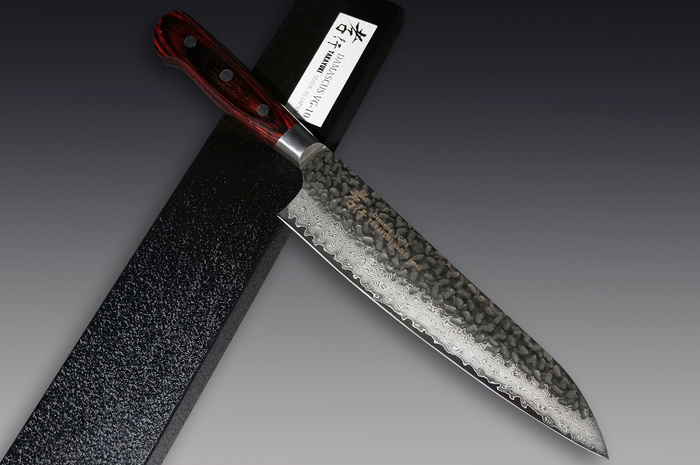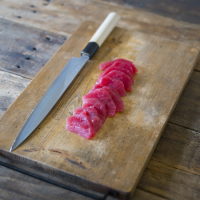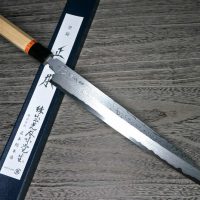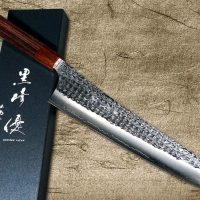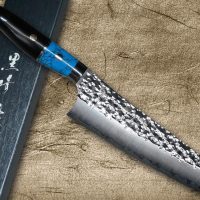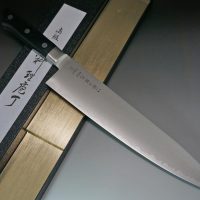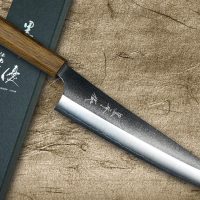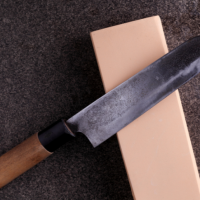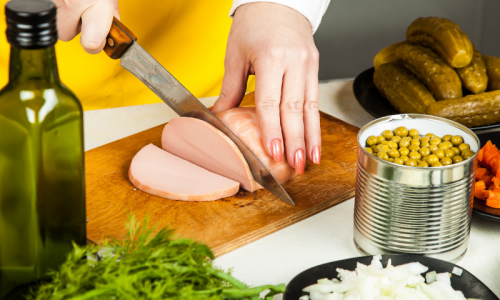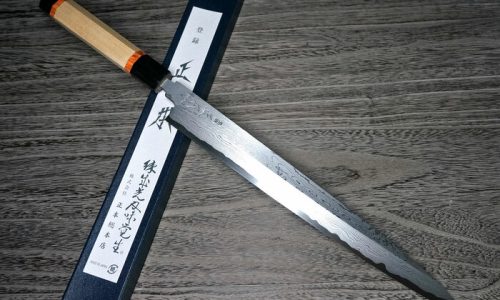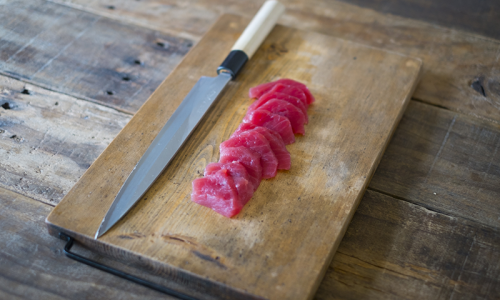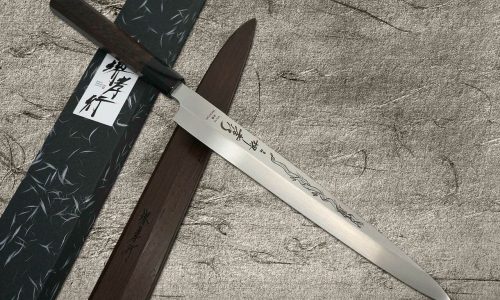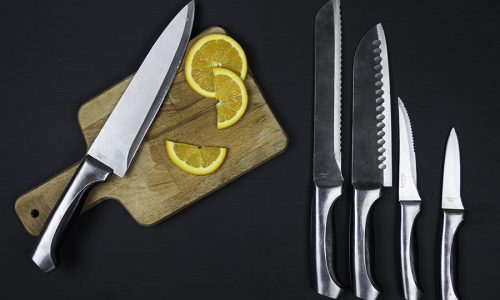img : Hocho Knife
As culinary experts, professional chefs, or even knife collectors, many would surely have heard of the globally-famed Damascus steel. Well-known since the pre-industrial era, Japanese blades forged with Damascus steel are aesthetic, extremely durable, and versatile – this leads to the fame and popularity of Damascus knives, mostly found in knife series and models by huge companies like Sakai Takayuki and Yu Kurosaki.
History of Damascus Knives
Over 2000 years ago, Damascus blades were first manufactured in the Near East from blocks of patterned, high-carbon Wootz steel, which is a type of steel originally made and imported from South India. The name ‘Damascus’ comes from the capital of Syria, where the authentic Damascus steel blades are thought to have been made. Damascus steel blades were easily recognizable as they are extremely sleek and bear a characteristic of having wavy lights and dark patterns.
A unique combination of metals and impurities with high carbon concentration values, Damascus steel is unique in its very own way. Producing Damascus steel involves the melting of iron and steel together with charcoal under conditions with little to almost no oxygen. Forging Wootz steel to make swords and other weapons resulted in the creation of Damascus steel.
About Damascus steel
Today, the knives labeled as ‘Damascus’ knives are available in various companies. However, most only mimic the appearance of the original Damascus steels introduced centuries ago. Historically, authentic Damascus steel is processed along with Wootz steel, however the knowledge of the original technique required to craft Wootz was lost in the 1700s. In recent decades, a great deal of research and reverse engineering has tried to replicate the original Damascus steel and dive through the original techniques essential to craft them. However, no one has been able to successfully cast a similar material. Modern layered and pattern-welded steel, also referred to as ‘Damascus steel’, may be similar, but not the same as the Wootz from centuries ago.
Among the similar steels that can be used in place of Wootz, Pattern-welded steel has physical properties which are very similar to the ancient Damascus steel.
Modern, pattern-welded Damascus blades are made by layering iron and steel
Forging the metals together by hammering them at high temperature to form a welded bond.
Oxygen is kept out of the process via a flux seal
Forge welding multiple layers produces a wide variety of designs and patterns on the blade.
To mimic the light and dark stripes, two steels
One with high nickel content and the other with lesser, are welded together.
Uses of Damascus Knives
Damascus steel knives come in various forms and varieties for use in purposes that range from camping, cooking, to hunting. Not only are Damascus steel knives extremely aesthetic and known for its ornate designs, but they are also highly functional, versatile, durable, and are known for maintaining sharp edges. As the unique features and characteristics made Damascus knives special, as chefs and professionals are always in the search for premium quality ones to fulfill their duties and meet their needs.
Recommended Damascus Kitchen Chef Knives
The original method of producing Damascus knives was lost in the 1700s, and people have been trying for centuries to replicate the original Damascus steel to no avail. The mystery of how original Damascus steel was made make it something of a legend among metallurgists.
With this being a challenge in finding the traditional Damascus knife to cook exquisite Japanese cuisine, it is best to rely upon Japan’s top-tier quality knife brands like Sakai Takayuki and Yu Kurosaki for the most suitable Damascus steel blades made to work similarly with the authentic, traditionally forged, ancient Damascus blades.

